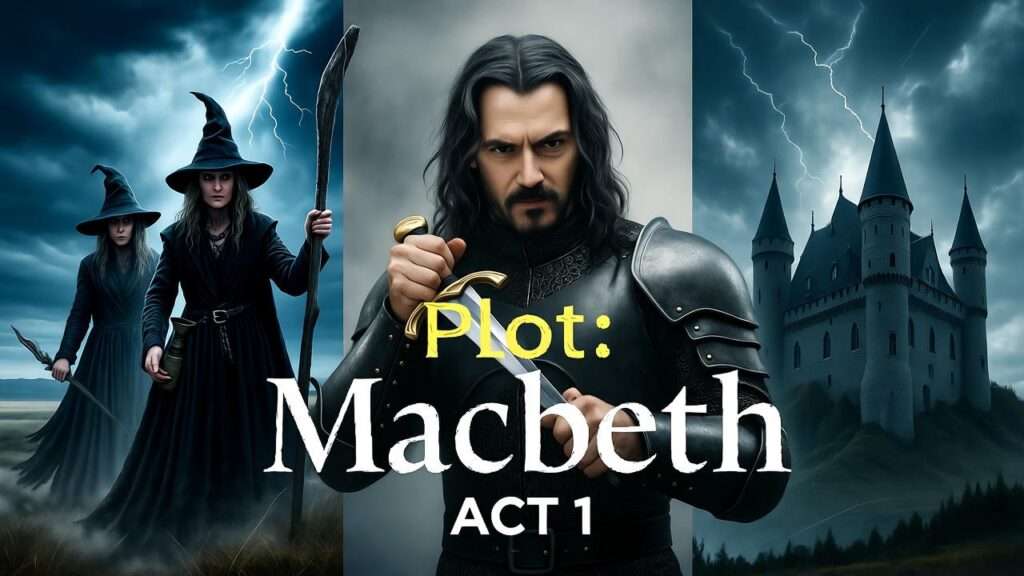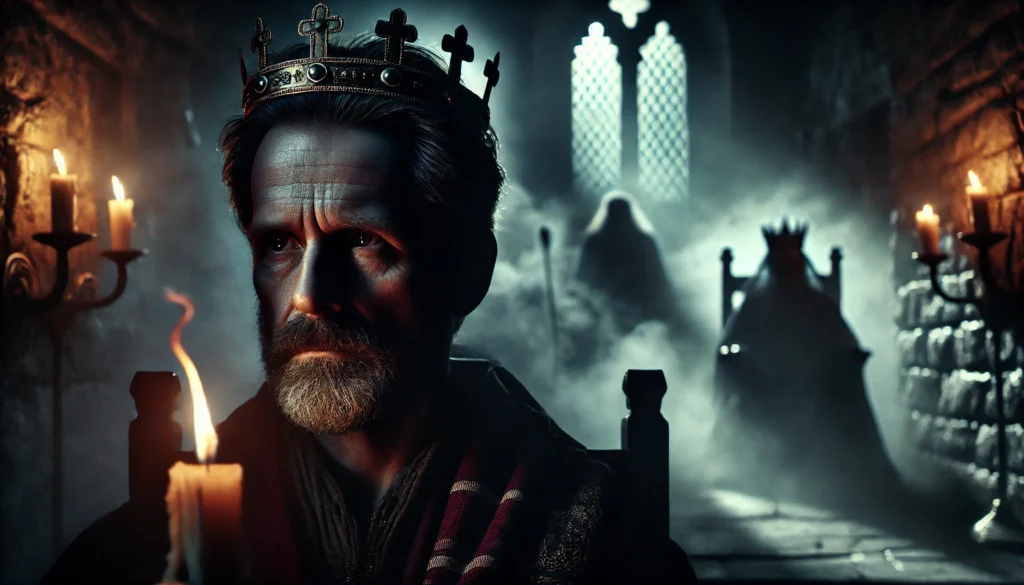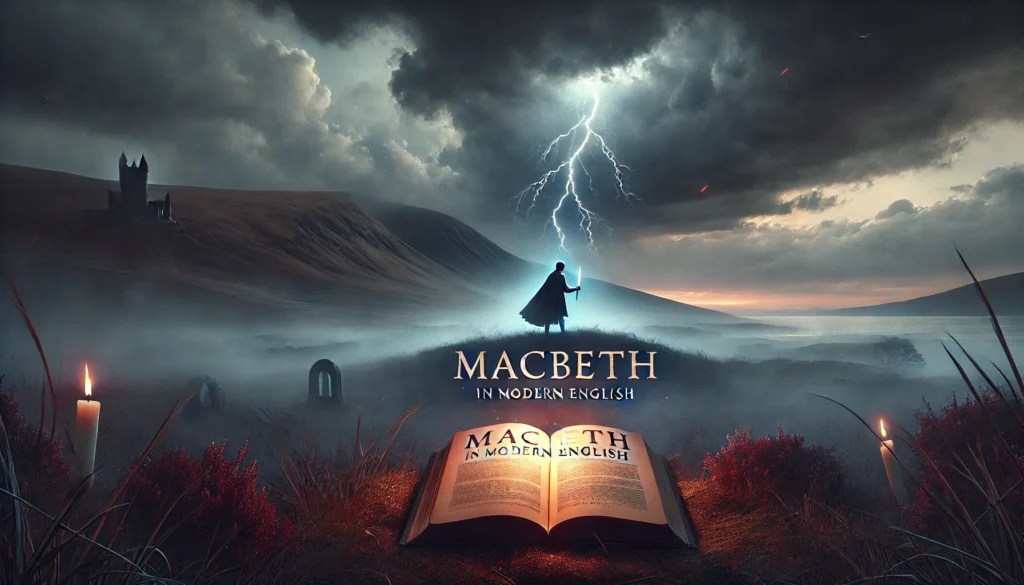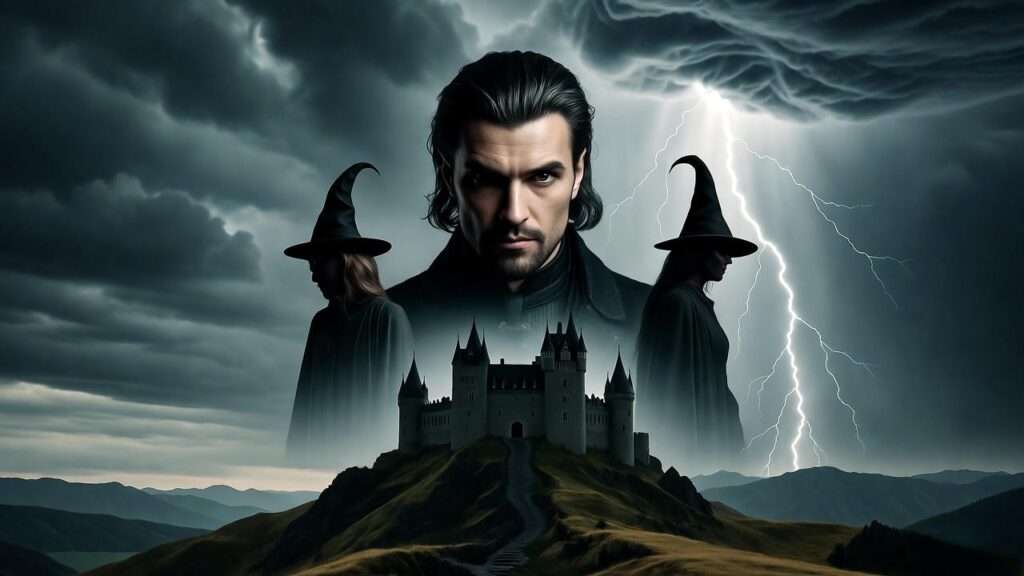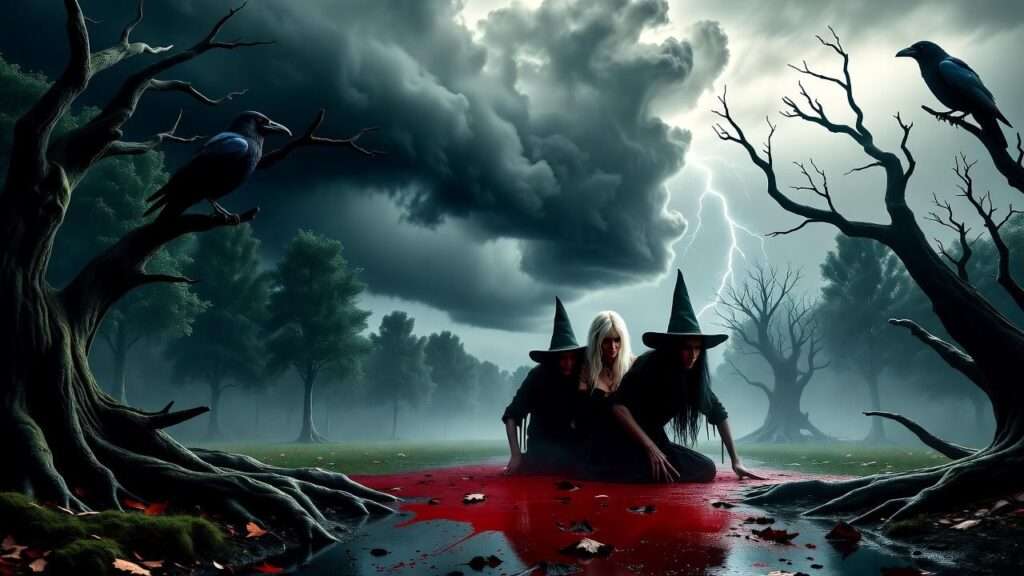These chilling words from the three witches open Macbeth, plunging us into a world where prophecy, ambition, and murder collide. If you’ve ever struggled to follow the plot of Macbeth Act 1—with its whirlwind of battlefield reports, eerie prophecies, and simmering treachery—this guide is your definitive roadmap.
As a Shakespeare scholar with over 15 years teaching Macbeth to high school students, university undergraduates, and even actors preparing for RSC productions, I’ve seen firsthand how Act 1 confounds readers. Its seven scenes pack in character introductions, thematic foundations, and the spark of regicide, all while weaving supernatural threads that define the tragedy. This comprehensive scene-by-scene summary breaks it down clearly: key events, essential quotes, character motivations, and expert analysis to help you ace exams, write killer essays, or simply appreciate Shakespeare’s genius.
Whether you’re a student cramming for AP Literature, a teacher seeking classroom-ready materials, or a lifelong fan revisiting the play, this article demystifies Act 1’s plot. We’ll cover everything from the witches’ first cackle to Macbeth’s dagger hallucination—proving why this act isn’t just setup, but the psychological powder keg of Shakespeare’s shortest, bloodiest tragedy. Let’s dive in.
Historical and Literary Context of Macbeth Act 1
Why Understanding the Context Unlocks Act 1’s Secrets
To grasp the plot of Macbeth Act 1, we must step into 1606 London, where Shakespeare penned this tragedy for King James I. Fresh off the Gunpowder Plot—a Catholic conspiracy to assassinate the Protestant king—Macbeth tapped into national paranoia about treason and the supernatural. James himself authored Daemonologie (1597), a treatise on witchcraft, making the play’s “weird sisters” not mere fantasy, but a topical terror.
Structurally, Macbeth is a tight tragedy of ambition, clocking in at under 2,200 lines. Act 1 serves as masterful exposition: it introduces the heroic Macbeth, plants prophetic seeds, and escalates to moral crisis. Elizabethan audiences believed in a divinely ordained hierarchy—king as God’s deputy—so Duncan’s murder violates cosmic order, explaining the play’s relentless guilt motifs.
Key themes emerge here: ambition unchecked, equivocation (deceptive language), and supernatural agency. The witches don’t force fate; they equivocate, blurring free will and predestination—a debate that gripped Renaissance thinkers like Calvin.
Expert Insight: In performances, directors amplify Elizabethan witchcraft fears—think dim torchlight and herbal fog on the heath. This context transforms Act 1 from confusing prologue to a visceral warning: when prophecy meets vaulting ambition, tragedy ensues. Understanding this elevates your reading, revealing Macbeth as Shakespeare’s commentary on Jacobean politics.
Complete Scene-by-Scene Summary of Macbeth Act 1
Scene 1: The Witches’ Prophecy – Chaos Unleashed on the Heath
Thunder cracks. Filthy air swirls. On a desolate Scottish heath, three witches—hags with “choppy finger” and “skinny lips”—converge amid storm and battle cries.
Key Events:
- The Weird Sisters plan to meet Macbeth post-battle.
- They chant the play’s thematic cornerstone: “Fair is foul, and foul is fair.”
- Cryptic tease: “When the battle’s lost and won.”
Significance: In just 12 lines, Shakespeare inverts morality—beauty masks evil, victory hides defeat. This sets the supernatural tone, priming us for equivocation.
Key Quote Analysis:
“Fair is foul, and foul is fair: / Hover through the fog and filthy air.” (1.1.11-12)
This paradox echoes throughout: Macbeth’s “fair” heroism fouls into tyranny. For students: Note how it foreshadows the play’s imagery of darkness over light.
Visual Aid Suggestion: Imagine a timeline—Witches appear in Scenes 1, 3; their influence ripples through all seven.
Scene 2: The Battlefield Hero – Macbeth’s First Introduction
Shift to Forres, King Duncan’s camp. A bleeding sergeant staggers in, reporting the civil war against Norwegian invaders and rebel Thane of Cawdor.
Key Events:
- Macbeth and Banquo valiantly repel attacks: Macbeth “disdaining Fortune” carves through foes like a Titan.
- Ross confirms victory; Duncan orders Cawdor’s execution and awards his title to Macbeth.
Character Introductions:
- Duncan: Benevolent, trusting king.
- Malcolm: Dutiful heir.
- Ross: Loyal thane and messenger.
Significance: We meet Macbeth as archetype hero—”For brave Macbeth—well he deserves that name” (1.2.16)—creating dramatic irony. Audiences know witches await him.
Key Quote:
“The merciless Macdonwald / Worthy to be a rebel…” (1.2.9-10)
Expert Tip: This scene’s hyperbole (Macbeth as “Bellona’s bridegroom”) contrasts his later cowardice, fueling tragic fall.
Scene 3: The Prophecies Ignite Ambition – Meeting the Weird Sisters
Back on the heath, thunder rumbles. Macbeth and Banquo, battle-weary, encounter the witches.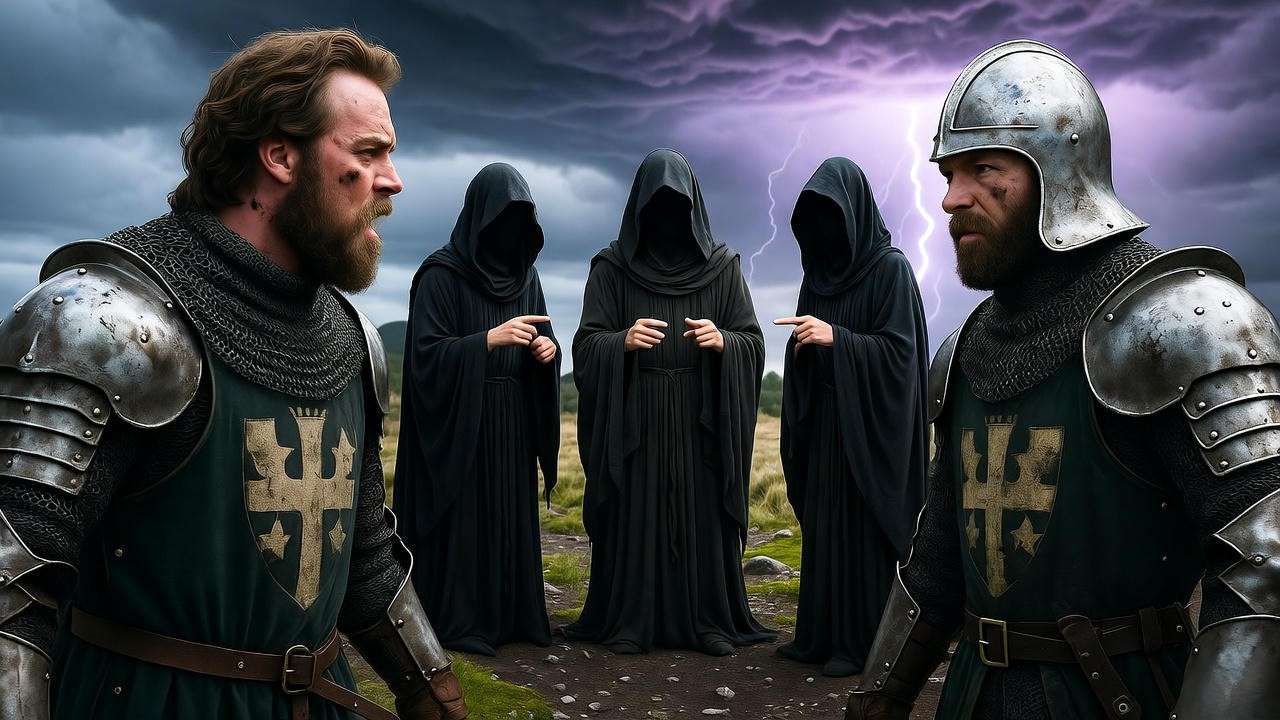
Key Events:
- Witches hail Macbeth: “Thane of Glamis” (his current title), “Thane of Cawdor” (unknown to him), “king hereafter!”
- Banquo: Lesser than Macbeth but “happier,” with sons as kings.
- Ross arrives: Macbeth is now Thane of Cawdor—first prophecy fulfilled.
- Witches vanish in thunder.
Character Introductions:
- Macbeth: Valiant captain, now tempted usurper.
- Banquo: Skeptical, honorable foil.
Macbeth’s Reaction: His first aside—”Why do I yield to that suggestion / Whose horrid image doth unfix my hair?” (1.3.134-135)—reveals instant regicidal thoughts.
Key Quote:
“All hail, Macbeth, that shalt be king hereafter!” (1.3.50)
Analysis: Ambition ignites. Banquo resists (“The instruments of darkness tell us truths… to betray’s in deepest consequence” [1.3.123-125]), highlighting Macbeth’s flaw. This scene plants fate vs. free will.
Scene 4: Royal Gratitude and the Seeds of Betrayal
In Forres’ throne room, Duncan rewards loyalty.
Key Events:
- Macbeth arrives; Duncan grants him Cawdor.
- Duncan names Malcolm Prince of Cumberland—heir apparent.
- Macbeth’s aside: “Stars, hide your fires; / Let not light see my black and deep desires” (1.4.50-51).
Significance: Second prophecy confirms; “Cumberland” becomes Macbeth’s obstacle, birthing betrayal.
Expert Insight: Duncan’s effusive trust (“I have begun to plant thee, and will labour / To make thee full of growing” [1.4.28-29]) amplifies irony—his “golden” hospitality dooms him.
Scene 5: Lady Macbeth – The Architect of Murder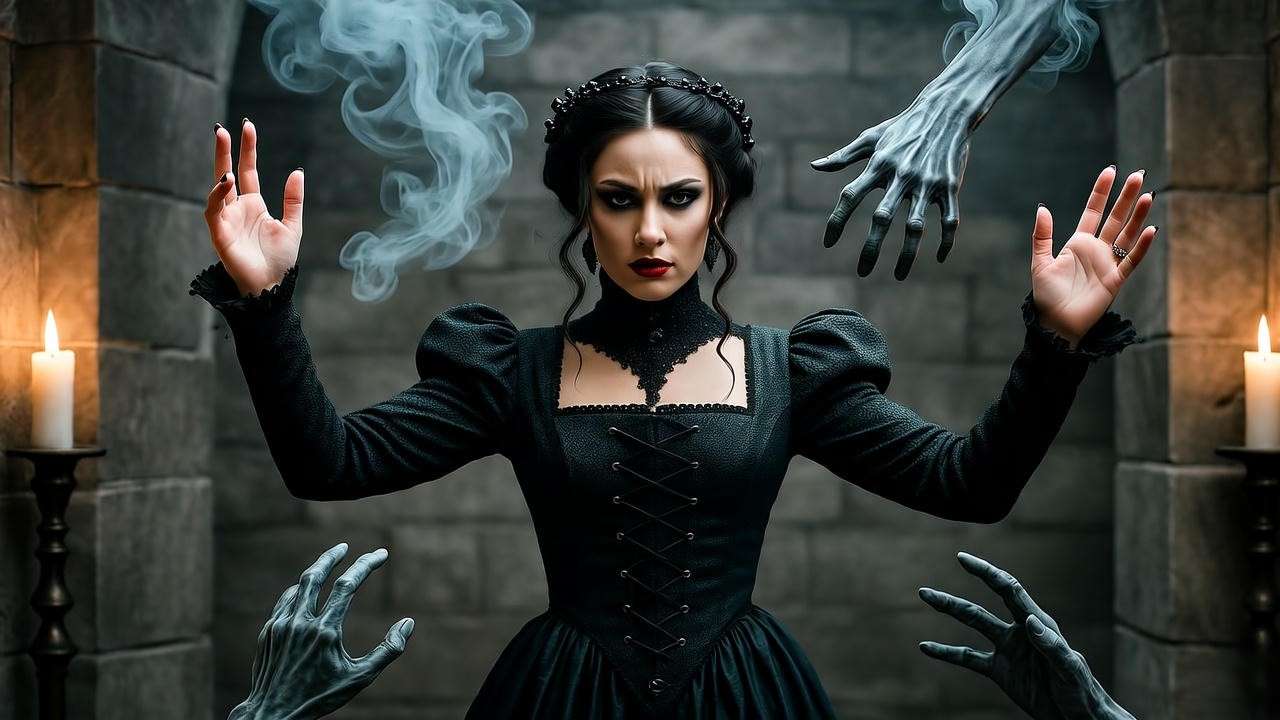
Inverness Castle. Lady Macbeth reads Macbeth’s letter recounting the prophecies.
Key Events:
- She fears Macbeth’s “milk of human kindness” softens him for kingship.
- Soliloquy: Summons spirits—”Come, you spirits / That tend on mortal thoughts, unsex me here” (1.5.38-39)—to strip femininity for ruthlessness.
- When Macbeth arrives, she plots: Frame Duncan’s guards.
Character Analysis: From loving wife to “fiend-like queen.” Her invocation inverts gender: Milk becomes gall, compassion cruelty.
Key Quote:
“Come, you spirits / That tend on mortal thoughts, unsex me here, / And fill me from the crown to the toe top-full / Of direst cruelty!” (1.5.38-41)
Thematic Tie-In: Challenges Elizabethan ideals—women as chaste vessels. Shakespeare critiques ambition’s dehumanizing force.
Scene 6: Duncan’s Fatal Arrival
Duncan, Malcolm, Banquo, and retinue approach Inverness.
Key Events:
- Duncan admires the castle: “This castle hath a pleasant seat; the air / Nimbly and sweetly recommends itself” (1.6.1-2).
- Lady Macbeth welcomes him obsequiously.
Irony Analysis: “Pleasant seat” masks murder plot. Links to witches’ equivocation—fair appearance, foul reality.
Foreshadowing: Duncan’s nightingale simile hints at deceptive peace before slaughter.
Scene 7: The Dagger Soliloquy – Macbeth’s Moral Crisis
Castle courtyard, dinner horns blare. Macbeth ponders alone.
Key Events:
- Hallucination: “Is this a dagger which I see before me?” (1.7.33)—dagger points to Duncan’s chamber.
- Soliloquy weighs pros/cons: Eternal damnation vs. crown’s security.
- He resolves to abandon plot: “We will proceed no further in this business” (1.7.31).
- Lady Macbeth shames him—”Have you the valor…?”—promising a foolproof frame-up.
Famous Soliloquy Excerpt:
“Is this a dagger which I see before me, / The handle toward my hand? Come, let me clutch thee. / I have thee not, and yet I see thee still.” (1.7.33-35)
Character Development: Macbeth’s conscience flickers; Lady’s resolve prevails.
Expert Analysis: Pivotal turning point. The dagger—hallucination or supernatural?—symbolizes guilt foretold. Commitment seals his fate.
Key Themes and Motifs in Act 1 Explained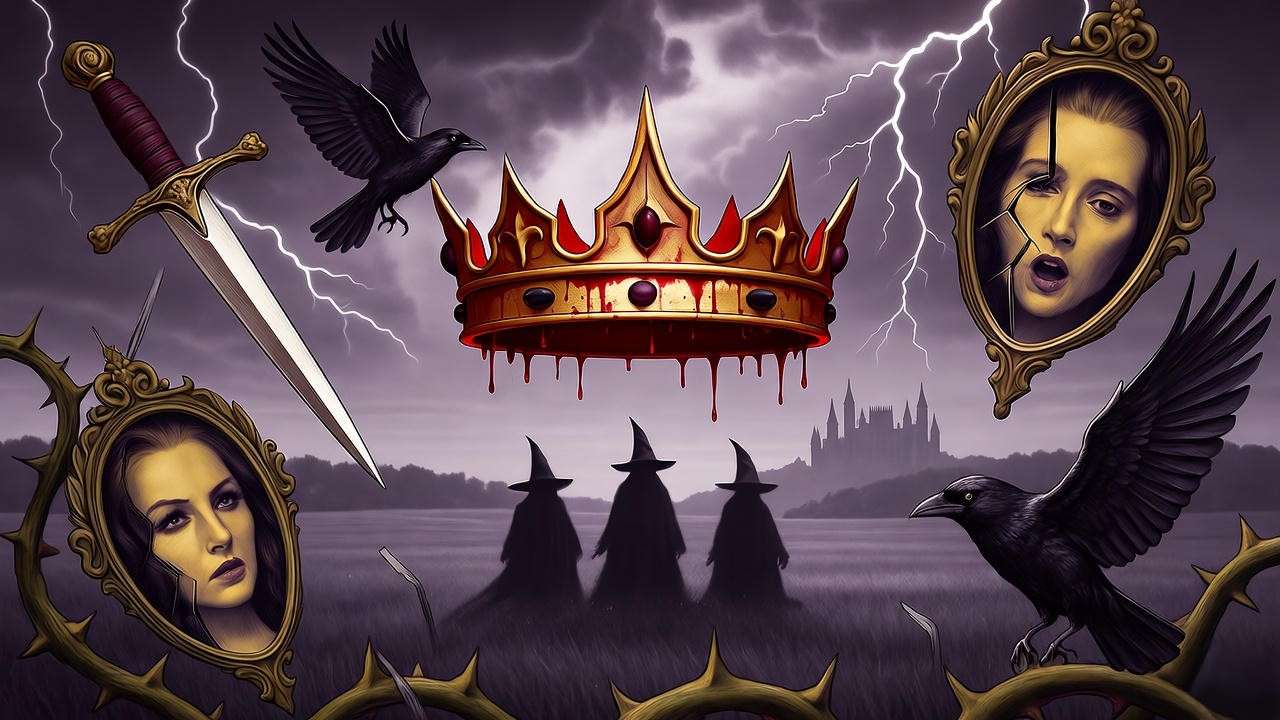
Act 1 masterfully seeds Macbeth‘s core ideas, using motifs like blood, darkness, and animals to underscore psychological descent.
Ambition vs. Fate: How Prophecies Blur Destiny and Choice
The witches’ hails ignite Macbeth’s latent desire, but who drives the plot? Shakespeare leaves it ambiguous—prophecies self-fulfill through ambition.
Appearance vs. Reality: The Art of Equivocation
From witches’ paradoxes to Lady Macbeth’s hospitality, deception reigns. Duncan sees loyalty; we see treason.
Supernatural Influence: Catalysts, Not Puppeteers
Witches reveal truths but twist them. Banquo warns of their “double sense.”
Gender and Power: Lady Macbeth’s Inversion
Her “unsex me” prayer subverts femininity for masculine cruelty, questioning Renaissance power dynamics.
Theme Tracker Table
| Theme | Key Scene | Quote Example | Significance |
|---|---|---|---|
| Ambition | 3 | “Shalt be king hereafter” | Ignites internal conflict |
| Equivocation | 1 | “Fair is foul, and foul is fair” | Establishes moral inversion |
| Supernatural | 5 | “Unsex me here” | Supernatural aid for human ambition |
| Appearance/Reality | 6 | “This castle hath a pleasant seat” | Irony of murderous hospitality |
| Guilt/Fate | 7 | “Is this a dagger which I see?” | Psychological manifestation |
This table visualizes how themes interweave, making Act 1 a microcosm of the play.
Expert Insight: Modern psychology sees the witches as Macbeth’s id—unconscious drives projected outward. In therapy terms, Act 1 is the “inciting incident” of his tragic pathology.
Character Analysis: Who They Are in Act 1 (And What They Become)
Macbeth: From Warrior to Would-Be Tyrant
Act 1’s noble captain hides vaulting ambition. His asides reveal a man “shook” by murder’s “horrid image,” yet drawn to it. By Scene 7, hesitation yields to action—foreshadowing tyranny.
Lady Macbeth: Ambitious Partner in Crime
Initially supportive, she evolves into director of doom. Her “unsexing” signals willingness to sacrifice humanity for power, contrasting later madness.
The Witches: Agents of Chaos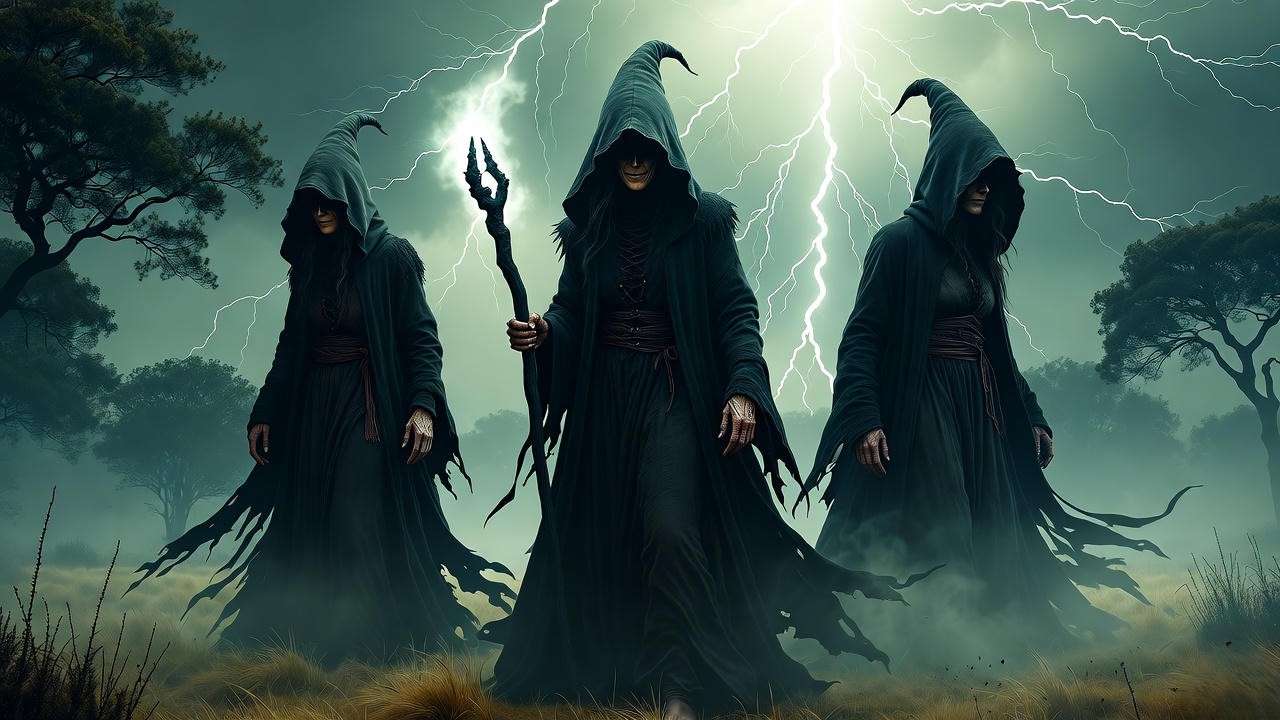
Not evil incarnate, but truth-tellers who exploit weakness. Their riddles empower choice, making them moral mirrors.
Banquo: The Moral Foil
Skeptical and paternal, he resists temptation—his line ends in kings, preserving honor.
King Duncan: The Trusting Ruler
Effusive gratitude blinds him; his “absolute” trust invites downfall.
Expert Insight: Psychoanalytically, Macbeth embodies the overreacher (Aristotle’s hamartia); Lady, the enabling superego. Compared to Othello‘s Iago, their internal villains make them tragically human.
Key Quotes from Act 1 – With Line-by-Line Analysis
Here are 10 essential quotes, formatted for study:
| Quote | Scene | Context | Modern Translation | Why It Matters |
|---|---|---|---|---|
| “Fair is foul, and foul is fair” | 1.1 | Witches’ chant | Good is bad, bad is good | Thematic motto; moral chaos |
| “For brave Macbeth—well he deserves that name” | 1.2 | Sergeant’s report | Macbeth is truly courageous | Ironic heroism |
| “All hail, Macbeth! Hail to thee, thane of Cawdor!” | 1.3 | First prophecy | You’re the new thane! | Partial truth ignites ambition |
| “Stars, hide your fires” | 1.4 | Macbeth’s aside | Hide my dark thoughts | Secret desire revealed |
| “Unsex me here” | 1.5 | Lady’s invocation | Make me ruthless | Gender inversion for power |
| “This castle hath a pleasant seat” | 1.6 | Duncan’s arrival | Nice place! | Ultimate dramatic irony |
| “Is this a dagger which I see before me?” | 1.7 | Hallucination | Do I see a knife? | Guilt’s first manifestation |
| “We will proceed no further” | 1.7 | Macbeth’s refusal | Let’s stop this | Fleeting morality |
| “Milk of human kindness” | 1.5 | Lady on Macbeth | Too soft-hearted | Flaw or virtue? |
| “The instruments of darkness” | 1.3 | Banquo’s warning | Evil deceivers | Foil to Macbeth’s belief |
Study Tips: How to Master Macbeth Act 1 for Exams and Essays
Act 1’s density demands smart strategies. Here’s how to conquer it: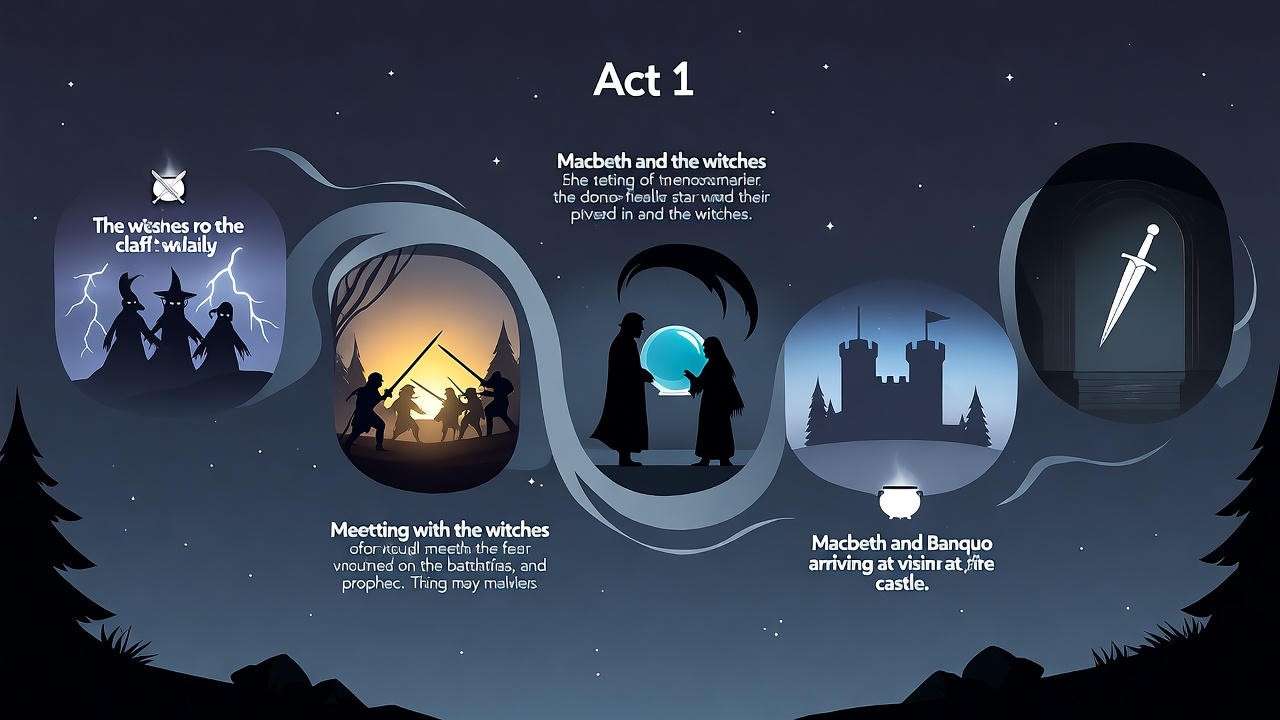
Active Reading Strategies
- Annotate by Theme: Highlight ambition (yellow), equivocation (red), supernatural (purple).
- Track Soliloquies: Chart Macbeth’s internal shift: Scene 3 (intrigue) → Scene 4 (desire) → Scene 7 (crisis).
- Dramatic Irony Map: Note what characters know vs. audience (e.g., Duncan unaware of prophecies).
Essay Prompts with Sample Thesis Statements
- Prompt: Discuss how Act 1 establishes the theme of appearance vs. reality.
- Thesis: “Shakespeare uses equivocal language from the witches’ opening chant to Lady Macbeth’s feigned hospitality, creating a world where ‘fair is foul,’ which foreshadows the tragic consequences of deception.”
- Prompt: Analyze Macbeth’s character development in Act 1.
- Thesis: “Macbeth evolves from heroic warrior to ambitious traitor through three pivotal asides, revealing his hamartia of unchecked ambition.”
Memorization Hacks for Soliloquies
- Dagger Soliloquy (1.7): Break into chunks—”Is this a dagger?” (visual), “Heat-oppressèd brain” (sensory), “If it were done…” (logic).
- Lady’s Invocation (1.5): Acronym UNSEX: Unsex, Nature, Spirits, Evil, X (cruelty).
Discussion Questions for Classrooms
- Do the witches cause Macbeth’s downfall, or merely reveal it?
- Is Lady Macbeth more villainous than Macbeth in Act 1?
- How does Scene 2’s heroism make the tragedy more poignant?
Visual Timeline of Act 1 Events
Scene 1: Witches plan → Scene 2: Battlefield victory → Scene 3: Prophecies fulfilled
↓
Scene 4: Thane of Cawdor → Scene 5: Lady plots → Scene 6: Duncan arrives
↓
Scene 7: Dagger → Murder resolvedThese tools transform confusion into confidence—perfect for AP Lit, GCSE, or IB exams.
Common Misconceptions About Act 1 Debunked
Act 1’s subtlety breeds errors. Let’s correct them with evidence:
| Misconception | Truth | Evidence from Text |
|---|---|---|
| Witches control Macbeth’s fate | They catalyze; he chooses | Banquo hears same prophecies but resists (1.3.123-125) |
| Lady Macbeth is the villain from the start | Ambitious enabler, not originator | Macbeth’s first murderous thought pre-dates her (1.3.134) |
| Act 1 is just setup—no real action | Psychological action drives plot | Dagger soliloquy = moral climax (1.7) |
| Macbeth kills Duncan in Act 1 | Decision made; act occurs in Act 2 | “We will proceed no further… [then] convinced” (1.7) |
Expert Correction: These myths oversimplify Shakespeare’s nuance. Act 1 is active tragedy—Macbeth’s will, not witchcraft, seals doom.
FAQs: Plot of Macbeth Act 1 Answered
What happens in Macbeth Act 1 Scene 3? The pivotal scene: Macbeth and Banquo meet the witches, who prophesy Macbeth’s rise to Thane of Cawdor and king. The first prophecy instantly fulfills when Ross confirms the title, igniting ambition.
Who kills the Thane of Cawdor? Macbeth does—reported in Scene 2 as he “unseam’d [Macdonwald] from the nave to the chaps” in battle.
Why does Lady Macbeth want to be “unsexed”? To shed feminine compassion (“milk of human kindness”) for ruthless resolve needed to murder Duncan (1.5.38-41).
How many scenes are in Act 1? Seven: Witches (1), battlefield (2), prophecies (3), rewards (4), Lady’s plot (5), Duncan’s arrival (6), dagger crisis (7).
Does Macbeth kill Duncan in Act 1? No—the murder happens in Act 2, Scene 2. Act 1 ends with his decision to proceed.
What is the main theme of Macbeth Act 1? Unchecked ambition, introduced via prophecies and equivocation (“Fair is foul, and foul is fair”).
Why is Scene 2 important if no Macbeth appears? It establishes his heroic reputation through others’ words, creating irony for his later fall.
Act 1’s Enduring Power and Next Steps
From the witches’ fog-shrouded chant to the dagger’s bloody vision, the plot of Macbeth Act 1 casts the die for tragedy. What begins as battlefield glory ends in regicidal resolve—prophecies fulfilled, not by fate, but by fatal choice. Shakespeare’s shortest act packs the deepest psychological punch, blending Elizabethan terror with timeless human frailty.

